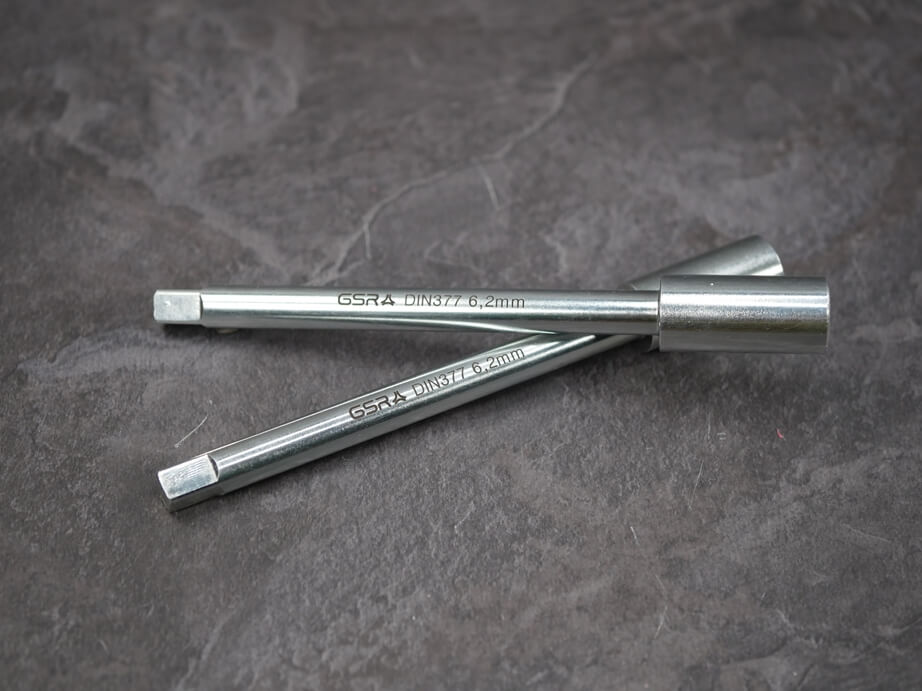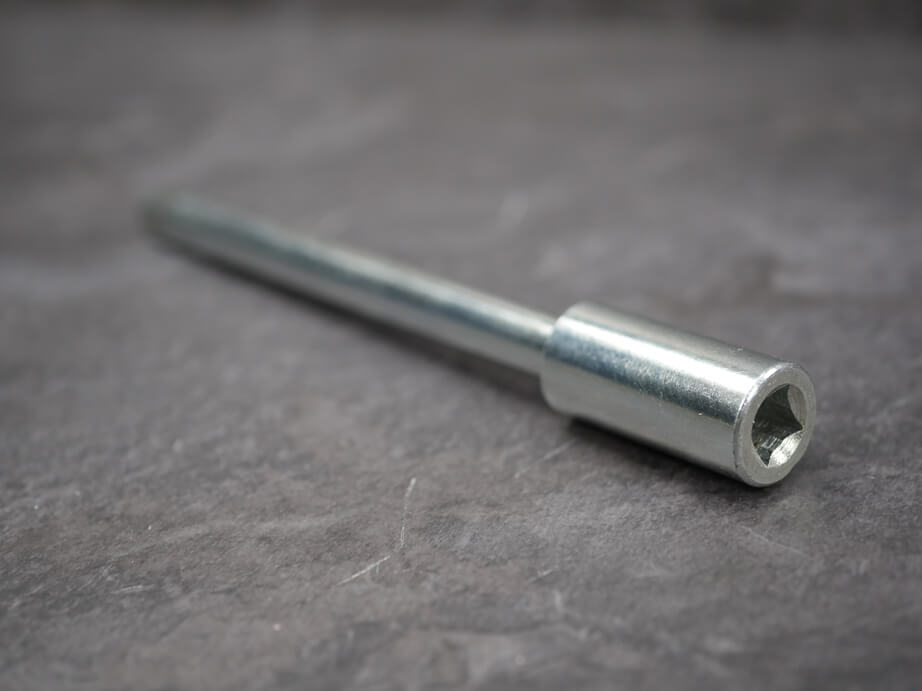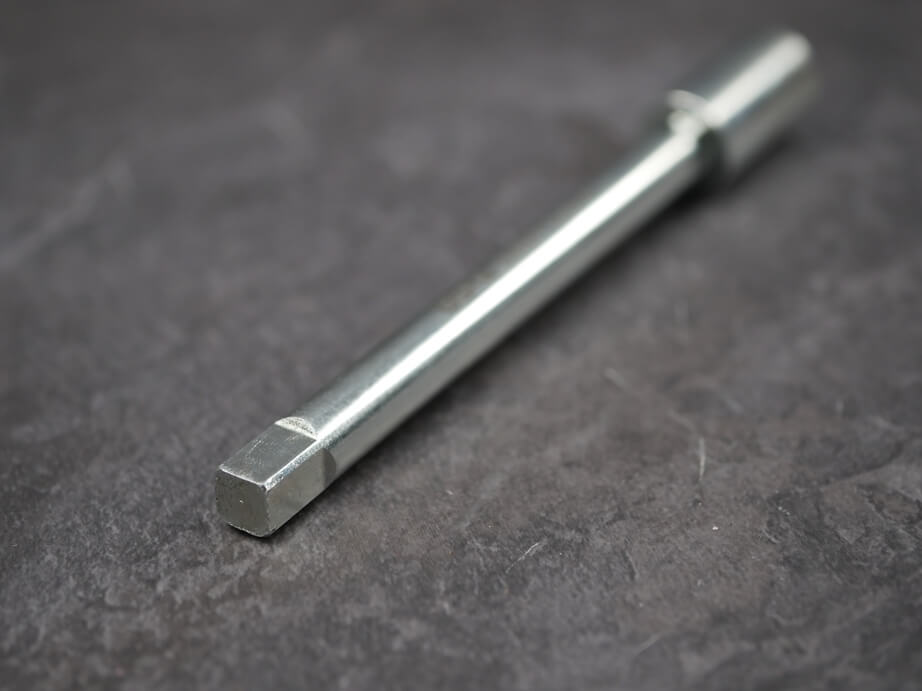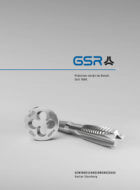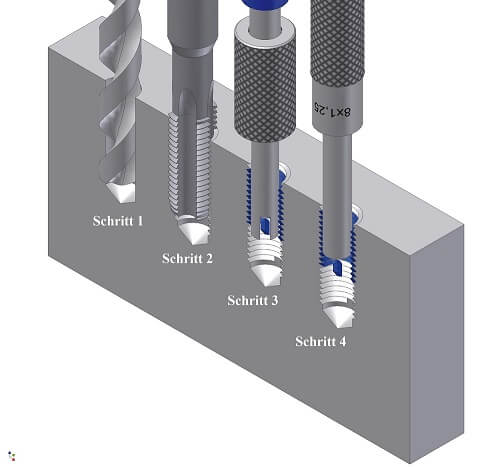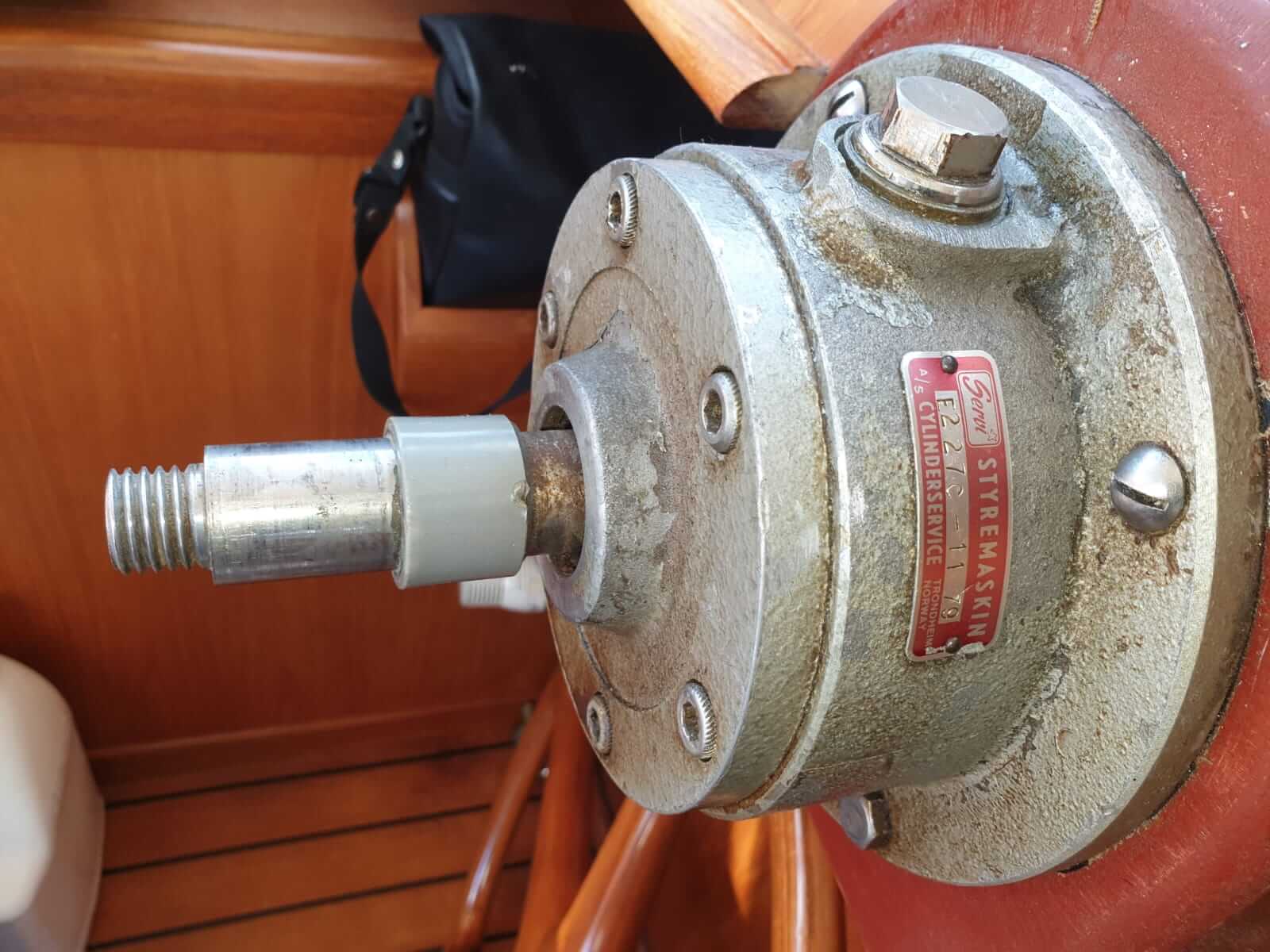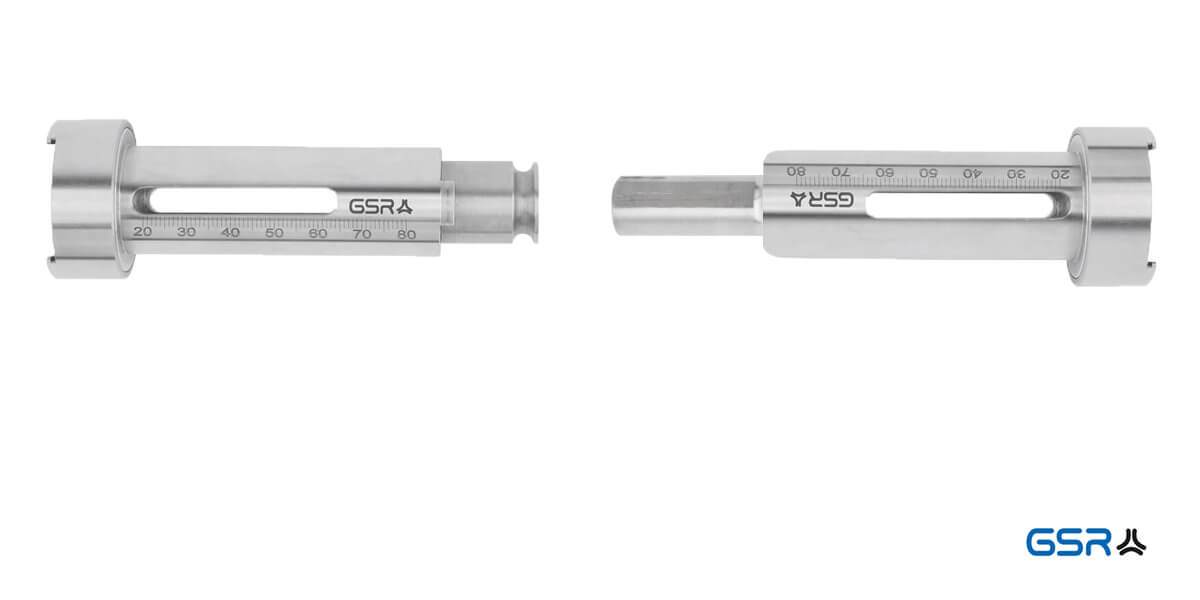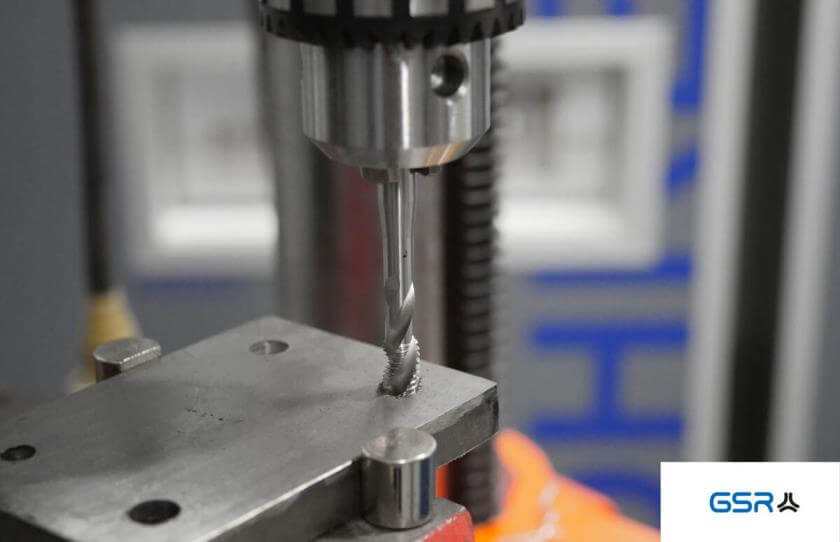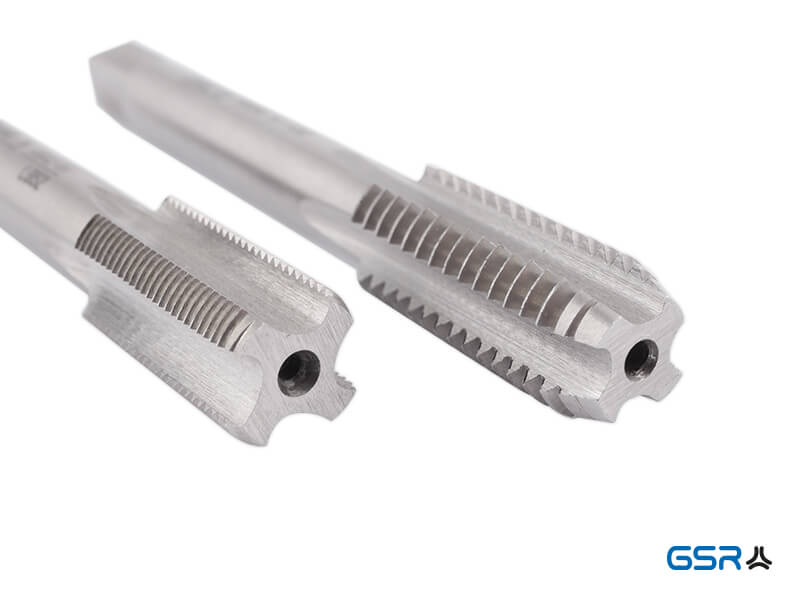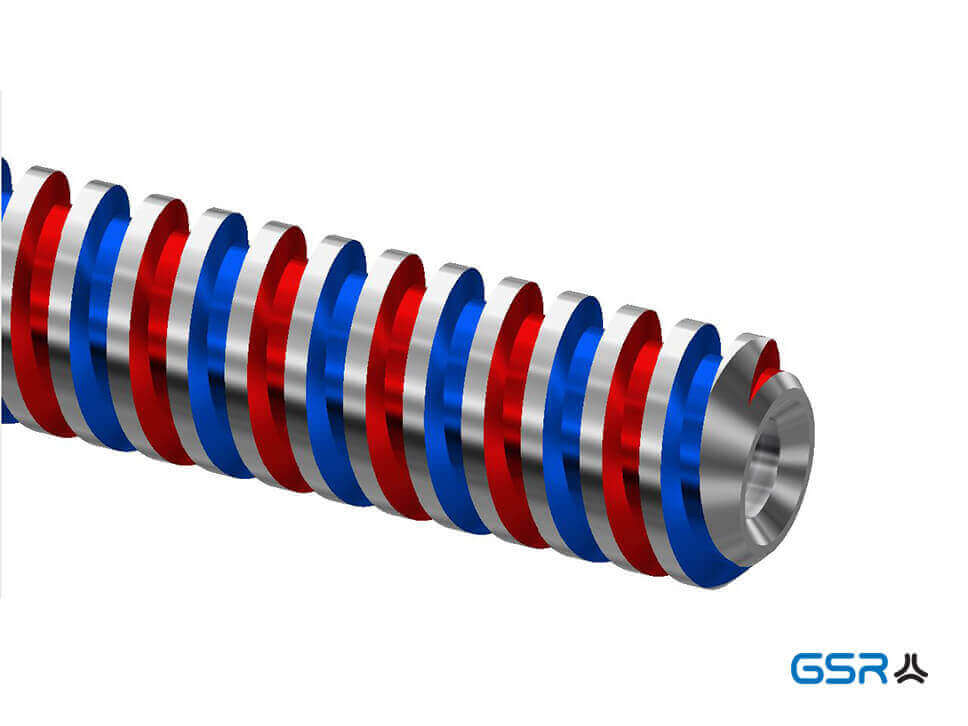What to do if taps are too short to cut deep internal threads? Then tap extensions help. These tools are defined in DIN 377 and are officially called extensions for tools with square shank according to DIN 10. And besides hand taps, other tools with square shank can also be extended, such as hand reamers and screw extractors.
The extensions are made of case-hardened or tempered steel, the outer and inner square should be hardened (47 +6 HRC) and the inner square should preferably be in the middle. As a rule, the square is cut to size after drilling. Overall length and length of the inner square are standardized. Tap extensions are available in sizes from 2.1 to 44 mm. The nominal size refers to the inner square, but the inner and outer square are the same. They can therefore also be inserted into each other. The nominal dimension and manufacturer’s data should be marked on the shaft. At least this is what the standard requires. The surface treatment of the tools is not regulated. Nickel-plated, burnished, chrome-plated and galvanized versions are available on the market.
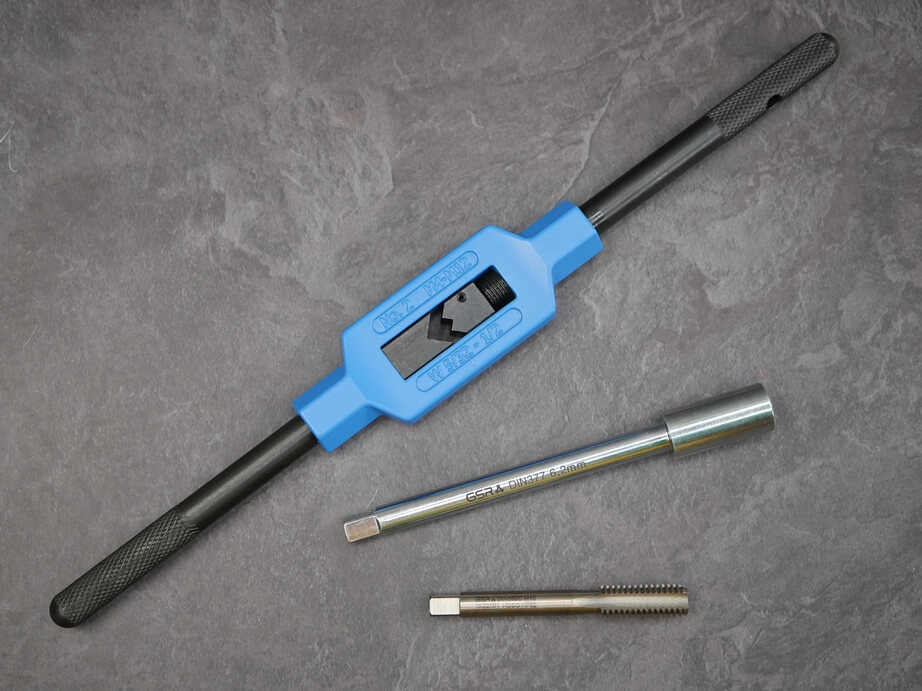
The application is very simple: the extensions are clamped into the adjustable tap wrench and the tap is picked up by the extension. A special fixation is not provided for this and is not necessary even with manually operated tools. An American manufacturer ( www.tapextension.com ) has developed a variant. The tap is driven into a tube with an external groove and thus fixed. The groove is used to remove the tap from the holding tool after use with a drift. Machine operated tools cannot be extended with this tool. Special extensions for machine taps are required for this. They fix the drill to the cylinder thread shaft and the drive is then carried out via the square. The design is complex because the required concentricity also demands high precision in production. Consequently, the tools are very expensive.





